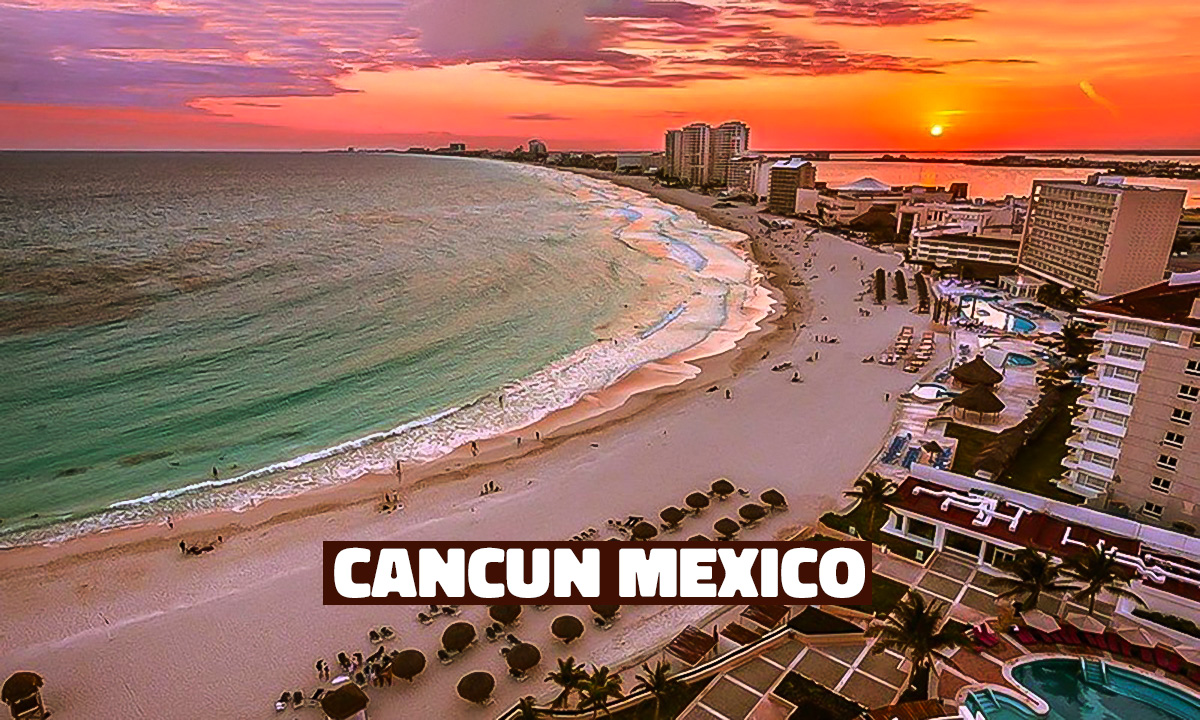Prague, the capital of the Czech Republic, is a hidden gem in the heart of Europe. This stunning city, often referred to as the ‘City of a Hundred Spires’, is known for its unique blend of history, culture, architecture, and delectable cuisine. It gained global recognition after 1945 with careful architectural restoration, and the historical city centre was listed as a UNESCO World Heritage site in 1992. In this post we will see list of top 12 best places to visit in Prague.
The city’s history dates back to human settlements between 500 and 200 BCE. The Vltava River’s central location enabled trade with the rest of Europe, leading to Prague’s cultural and architectural development. Famous personalities like Wolfgang Amadeus Mozart performed here, further enriching its cultural legacy.
Key historical attractions include the Infant Jesus of Prague located in the Church of Our Lady of Victories, the charming Old Town Square with its Gothic-style Church of Our Lady before Tyn, and the 15th-century Astronomical Clock. The Charles’ Bridge, commissioned by Charles IV, offers stunning views, and Prague Castle, the most visited tourist spot, is a showcase of Baroque architecture. Other highlights include Vitus Cathedral, the Lennon Wall, and museums such as the Communism Museum, Mucha Museum, and the National Museum of Prague.
Prague is also a paradise for food lovers, offering local delicacies like gulas, smazeny syr, grilovane klobasy, palacinky, and chlebicky. Top-rated restaurants include La Degustation Boheme Bourgeoise, Field, La Bottega Linka, Eska, Pho Vietnam Lan and Tuan, and Lehka Hlava.
The city offers numerous recreational activities, such as puppet shows, river cruises, nightlife, visiting farmer’s markets, and shopping for souvenirs at Cerna Ruze and Pragtique.
Prague has excellent connectivity by air and rail. The Václav Havel Airport and major train stations connect Prague to major European cities. The city has a moderate continental climate, with comfortable summers and extremely cold winters. The best time to visit Prague is from May to September when the weather is stable and the city is vibrant with festivals.
However, it’s advisable to book flight tickets and hotel accommodations six months in advance during the peak tourist season. Utilize public transportation or Uber for commuting, and remember, it’s customary to tip at least 10% in restaurants. You can also avail of tour guide packages and purchase tickets online to avoid crowded lines.
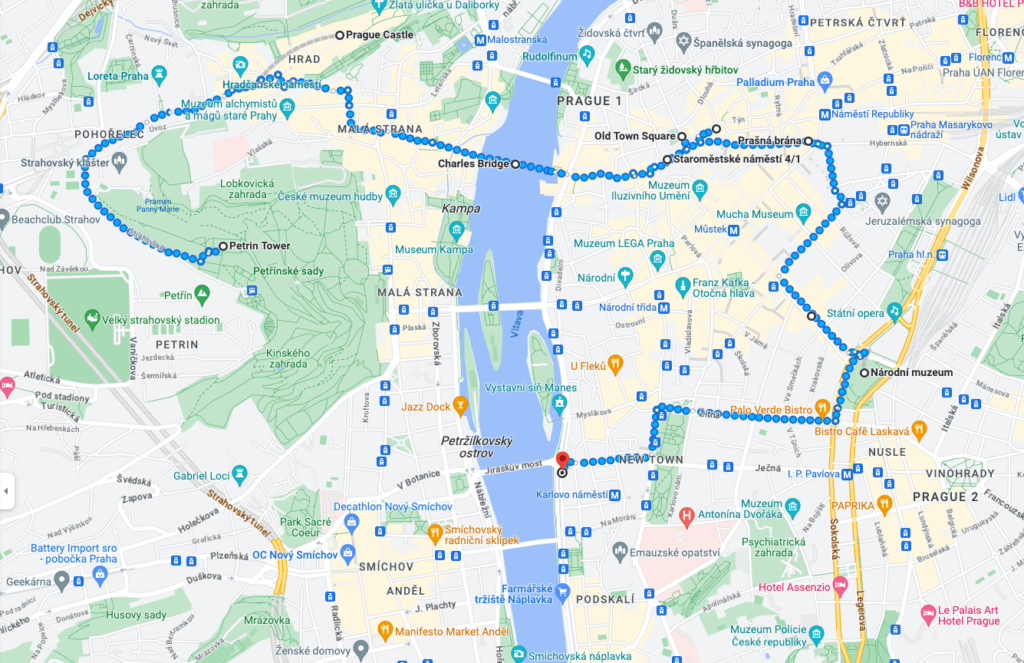
Table of Contents
Best Places to Visit in Prague
Here are my picks for the best places to visit in Prague, my opinion is based on Google reviews and personal experience.
1. Prague Castle
Prague Castle, the largest castle complex globally, dominates the city’s skyline and has been an integral symbol of the Czech state for over a thousand years. This architectural marvel, steeped in history and culture, began as a seat for Bohemian kings in the 9th century and later served as the official residence of Czech presidents.
Visitors to the castle are invited to explore its grand courtyards, the Old Royal Palace, and the captivating Cathedral of Saints Vitus, Wenceslas, and Adalbert. Saint George’s Basilica, another prominent monument within the complex, offers another perspective of the rich architectural heritage. The picturesque Golden Lane, lined with small colorful houses, adds a quaint charm to the majestic castle complex.
One of the highlights of the Prague Castle experience is the Royal Garden. Here, amidst the garden’s enchanting nooks and crannies, you’ll discover two Renaissance gems – the Ball Games Hall and Queen Anne’s Summer Palace, also known as the Belveder. These splendid structures provide a glimpse into the opulence of the Renaissance era.
Whether you are interested in history, architecture, or art, Prague Castle provides a comprehensive experience, making it a must-visit spot in Prague. The castle’s remarkable architecture, extensive history, and its status as a national symbol make it an unforgettable part of any visit to Prague.
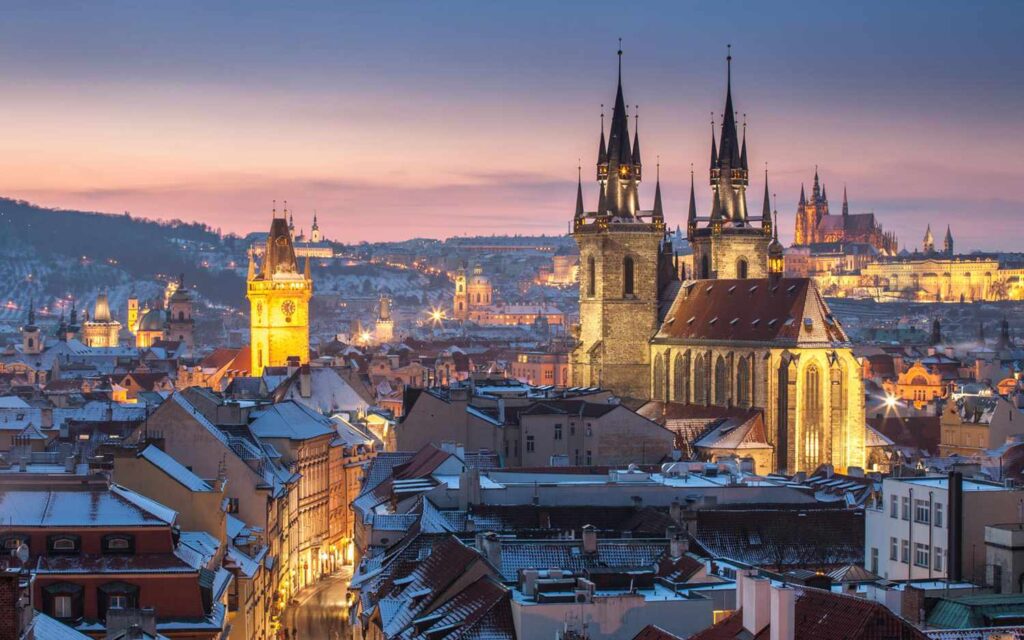
Things To See At Prague Castle
- Prague Castle Churches
- Prague Castle Halls
- Prague Castle Palaces
- Prague Castle Gardens
- Golden Lane
- Daliborka Tower
- Climb the Great South Tower
2. Charles Bridge
Located in the heart of the Czech Republic’s capital, Prague, the Charles Bridge is among the city’s most remarkable and prized landmarks. Synonymous with Prague’s rich history and grandeur, it is not only one of the most renowned bridges globally but also potentially the most beautiful in Europe.
Constructed during the golden age of Prague, the Charles Bridge’s significance extends beyond its architectural marvel. It’s intrinsically linked to the city’s history, representing an era of affluence and artistic flourishing. The bridge’s enduring beauty and historical importance make it a cornerstone of Prague’s cultural heritage and an unmissable sight for any visitor.
Spanning a length of 516 meters, a width of 9.5 meters, and standing 13 meters high, the Charles Bridge is an imposing structure. Built on 15 pillars, its robust construction has withstood the test of time, providing a picturesque walkway across the Vltava River.
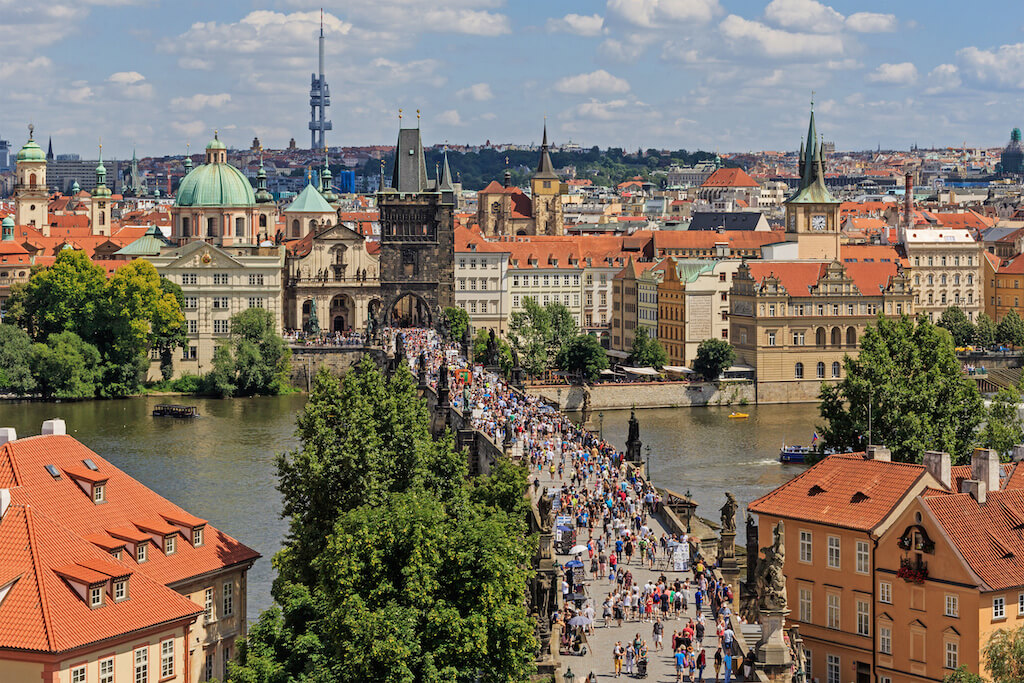
More than just a means of crossing the river, the bridge forms part of the prestigious Royal Route. This historical path, used for coronation parades of Czech kings, begins at the Prague Castle and leads through the Old Town, over the Charles Bridge, and ends at the Vyšehrad Castle. Walking along this route is a journey through the city’s rich tapestry of history and architectural splendor.
In summary, Charles Bridge is not just an architectural masterpiece; it’s an iconic symbol of Prague’s glorious past and a testament to the city’s cultural and historical significance.
3. Old Town Center
Old Town Square, or “Staroměstské náměstí” in Czech, serves as the heart of Prague’s historic district. The square itself, along with the Charles Bridge and Prague Castle, represents one of the top attractions in the Czech capital, making it a must-see for any visitor.
Among the notable highlights of Old Town Square is the famous Prague Astronomical Clock, also known as the Orloj. This medieval astronomical clock, mounted on the Old Town Hall, displays the current position of selected celestial objects. The lower section of the Orloj houses a beautifully decorated calendar dial, marking the current day.
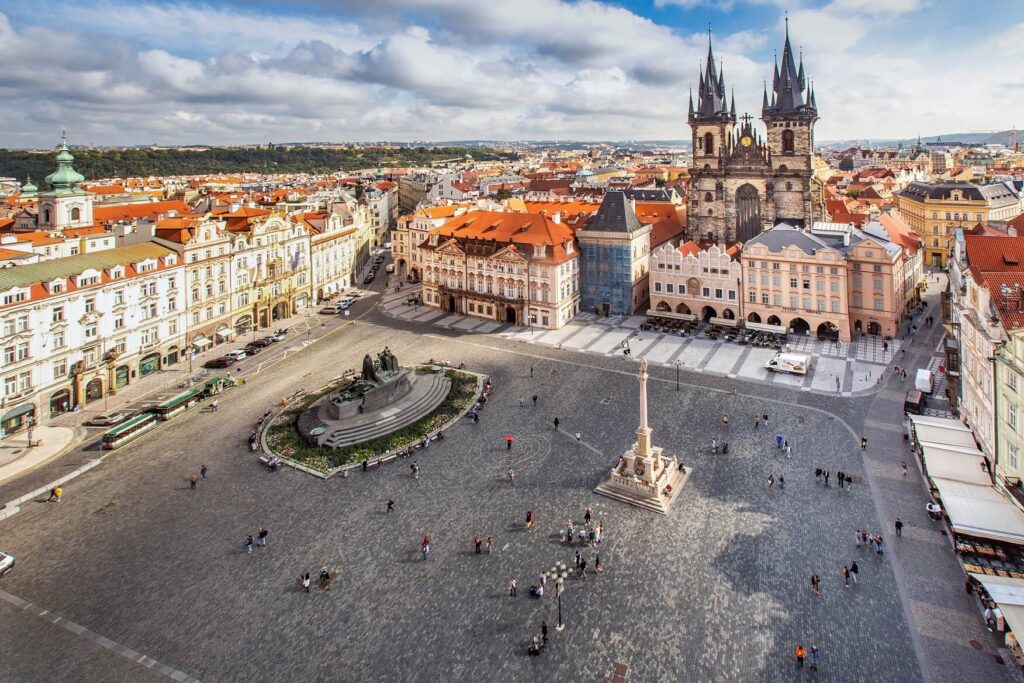
The Old Town Hall itself stands unique among its kind. Rather than being a singular building, it’s a complex of interconnected medieval structures. The tower of the Old Town Hall, completed in 1364, was once the tallest structure in the city. Today, the tower’s public observation deck provides visitors with breathtaking views over Old Town Square.
Another significant landmark visible from the square is the Church of Mother of God before Týn, also known as the Týn Church. Although not situated directly in the square, the church’s Gothic towers dominate the Old Town Square’s cityscape. Distinguished by their iconic spires, these towers are among Prague’s most recognizable landmarks, often featured in photographs of the city.
On the northwestern edge of the Old Town Square, you’ll find St. Nicholas Church. This 18th-century Baroque church serves as the main place of worship for the Czechoslovak Hussite Church. It’s important not to confuse this church with another St. Nicholas Church located in Malá Strana’s central square, which is a Roman Catholic church.
In conclusion, Old Town Square serves as a vibrant epicenter of Prague’s historical and cultural richness, blending centuries of architectural styles and histories into a single captivating space.
Things to See at Old Town Center
- Staromestske namesti
- Obecní Dům
- Church of Our Lady before Tyn
- Old Town Bridge Tower
- Rudolfinum
- Convent of St Agnes of Bohemia – National Gallery Prague
- Jan Hus Monument
- Man Hanging Out
4. Astronomical Clock at Old Town Center
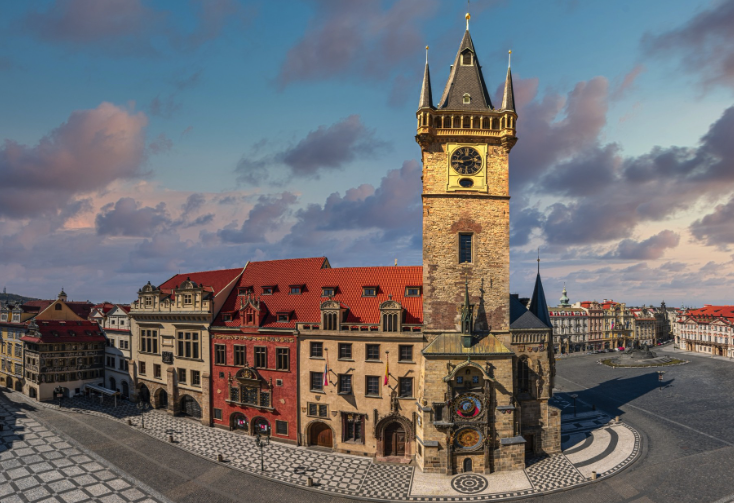
The medieval Astronomical Clock, known as Orloj, is a renowned feature on the southern side of the Old Town Hall Tower in Prague. It is an intricate piece of mechanical engineering dating back to 1410, making it the third-oldest astronomical clock in the world and the oldest one still in operation.
The clock is composed of three main components: the astronomical dial, the “Walk of the Apostles,” and a calendar dial. The astronomical dial, which portrays the position of the Sun and Moon, represents various astronomical details, while the calendar dial exhibits medallions for each day of the year, with allegorical depictions of the months.
One of the most fascinating elements of the clock is the hourly “Walk of the Apostles.” From 9:00 a.m. to 11:00 p.m., the striking of each hour initiates a procession of the Twelve Apostles, visible from the Old Town Square. For a closer look, visitors are recommended to buy a ticket to the Old Town Hall, from which they can observe the procession from the tower’s chapel.
As the parade of Apostles unfolds, other figures positioned around the astronomical clock also come to life. These include a skeleton, symbolizing Death, that rings a bell while turning an hourglass, indicating to a figure representing a Turk that his time is running out. The Turk responds by shaking his head. The other two figures, depicting Vanity and Greed, behave in a similar manner, adding to the spectacle and symbolism of the clock.
This blend of technological innovation, artistic beauty, and symbolic depth makes the Astronomical Clock a captivating historical monument that offers insights into the complex relationship between medieval spirituality and science.
5. Prašná Brána The Powder Tower
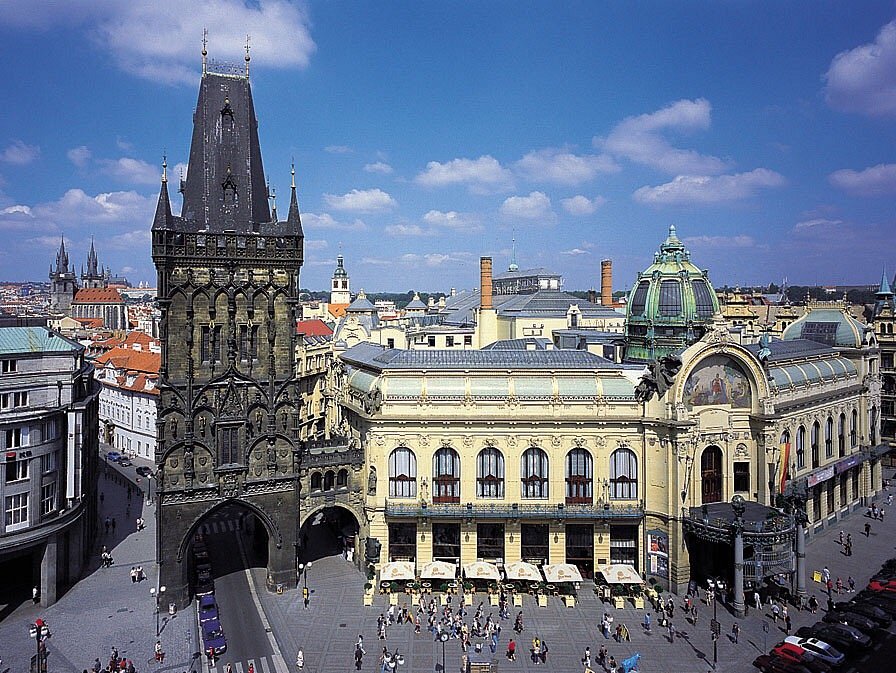
The Powder Tower, also known as the Powder Gate (“Prašná brána” in Czech), is a significant and iconic monument in Prague, the capital of the Czech Republic. This late-Gothic architectural marvel stands tall, marking the beginning of Celetná Street, a key part of the historical “Royal Way”.
This route played a critical role in the history of Bohemia, serving as the path that connected the former Royal Court with Prague Castle. Ceremonial processions, including the coronation of Czech kings, would traverse the Royal Way, with the Powder Tower serving as the grand entrance into the Old Town.
Originally, the Powder Tower was one of the 13 gates of the city in the 11th century. It effectively demarcated the boundary between Prague’s New Town and Old Town, offering a passage for citizens to enter the older part of the city. Today, this magnificent tower stands as a treasured symbol of Prague and a testament to its rich history, drawing visitors from all over the world who wish to experience a piece of the city’s past.
6. Tyn Church
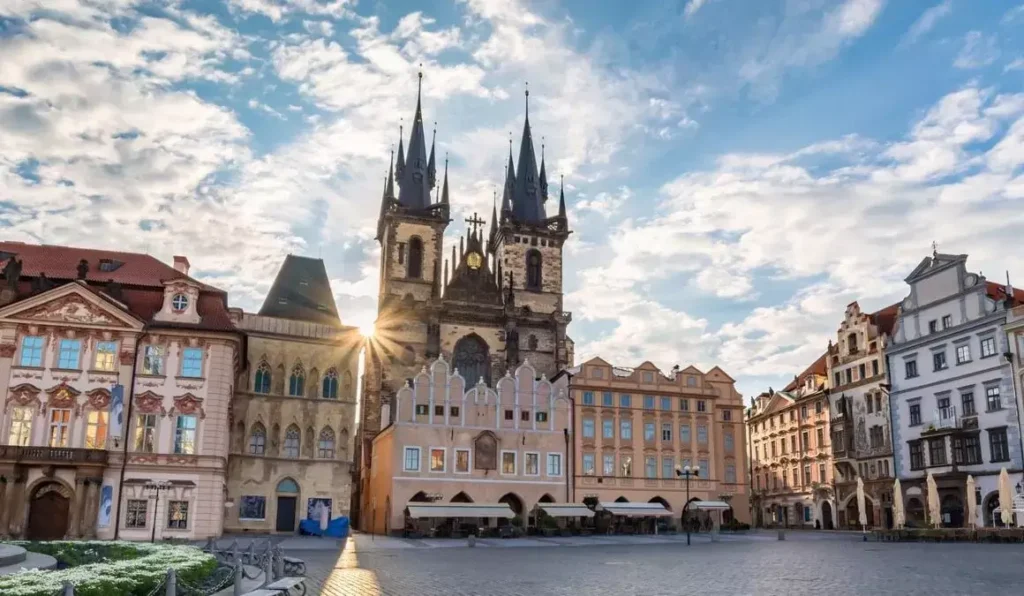
The Church of Our Lady Before Tyn, often simply referred to as Tyn Church, is one of the most prominent architectural landmarks in Prague’s Old Town Square. The Gothic exterior of the church was initiated in 1365 during the reign of King Charles IV, with the construction persisting until 1511, marking the completion of the southern tower.
During the construction period, the church suffered from two major fires, causing significant damage to the roof, which subsequently had to be reconstructed in a Baroque style. Prior to the unification of the four towns of Prague in 1784, Tyn Church served as the primary religious shrine of the Old Town.
The term “Tyn” is derived from the name of the medieval merchant’s yard and customs house located behind the church. Also referred to as Ungelt, a term meaning “tariff” or “ein Geld” in German, Tyn was a secure enclave where foreign merchants were required to stay. They were obligated to weigh and tax all of their merchandise within its confines. Essentially a fortified area within the Old Town, Tyn offered safety to its residents.
The yard was also colloquially known as “Vesely Dvur” or “Happy Yard” in Czech, a nod to the abundant entertainment options that were available to the wealthy merchants staying there. Consequently, Tyn Church is not only an iconic religious site but also a historical testament to the vibrant commercial life of medieval Prague.
7. Wenceslas Square
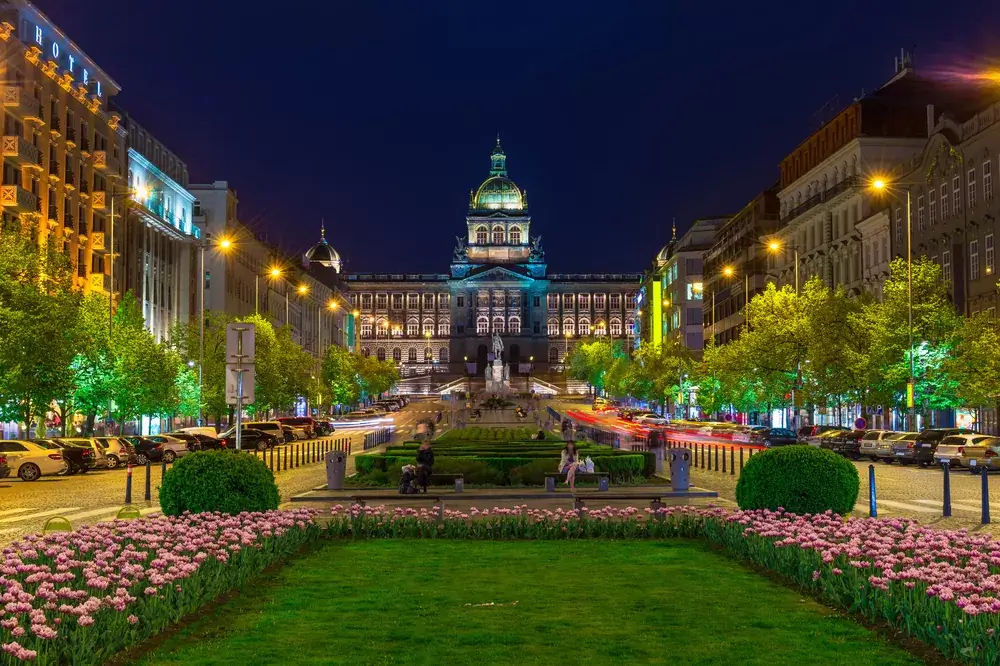
Commonly known as “Václavské náměstí” or affectionately dubbed “Václavák” by the locals, Wenceslas Square is an iconic avenue stretching across 700 metres and spreading 60 metres wide in the heart of Prague’s New Town, or “Nové Město” in Czech. In the past, the locale was widely recognised as the “Horse Market,” den oting its original function, but its contemporary designation is a heartfelt tribute to Saint Wenceslaus, the cherished patron saint of the Czech people.
Wenceslas Square has emerged as a thriving centre of cultural and commercial bustle in the capital city of Prague. It has been a strategic epicentre for a plethora of noteworthy events throughout Bohemian history. This custom persists in the contemporary era as the square repeatedly serves as a stage for public demonstrations, grand festivities, and various other large assemblies.
The prime position and historical value of Wenceslas Square make it an irresistible attraction for both visitors and residents. Whether one is captivated by the compelling chronicles of Prague, yearns for retail therapy, or looks forward to an exploration of the city’s lively nocturnal scene, Wenceslas Square is a wellspring of diverse offerings.
8. National Museum
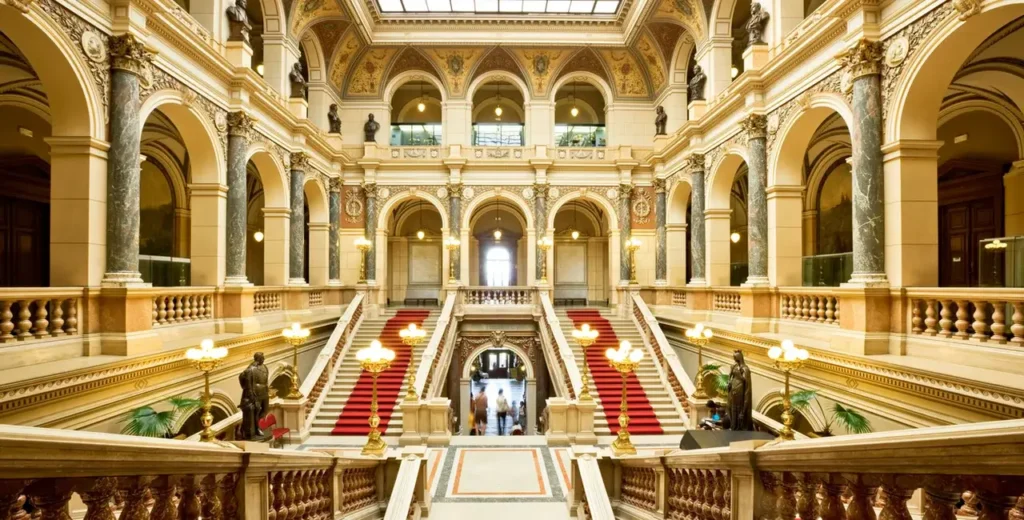
The Czech Republic boasts the largest museum in the country, the National Museum. This multidisciplinary institution covers a broad spectrum from the natural sciences to specialised areas within the social sciences. It houses collections that record the progression of nature, as well as the history and prehistory of both Czech and foreign origins. The museum’s displays are dispersed among various buildings around Prague, and it also offers a variety of cultural and educational programmes.
The establishment of the National Museum was a direct result of the Czech Society of Sciences’ formation in 1789. The museum, the oldest and largest in Bohemia, came into being in 1818. Initially known as the Patriotic Museum, it was established by a proclamation from Count Kaspar Sternberg, a leading figure among the local nobility. Sternberg, a notable mineralogist and palaeontologist, donated his collection of minerals to the museum. Furthermore, he was appointed as the chairman of the Society of the Patriotic Museum in Bohemia, which took ownership and responsibility of the museum’s collections, setting up its operations. Initially without a building of its own, the museum collected its first donations from private Czech aristocrats’ collections in St. James’s monastery, later moving to the rented premises of the Sternberg Palace in Prague Castle and subsequently, from 1845, the Nostitz Palace on Na Příkopě.
Several influential figures contributed to the museum’s development, including František Palacký, the Society of the Patriotic Museum’s managing director, and Jan Evangelista Purkyně, Joachim Barrande, Josef Dobrovský, Karel Jaromír Erben, among others. The publication of the first Czech scientific magazine, The Magazine of the National Museum (1827), and the foundation of Matice česká (1831), the publishing house for key works of Czech science and literature, were also vital.
From 1922, the museum was known by its present name. Ownership and administration passed to the Czech country in 1934 and then to state ownership in 1949. Originally, the museum focused primarily on natural sciences, but the collections expanded to include historical collections and specialisations in cultural and scientific fields, thanks to efforts by František Palacký and other patriotic individuals. The growth of collections required more space, leading to the acquisition of a plot for a new building following the demolition of the New Town fortification. Dr Ladislav Rieger managed to persuade the city council to donate the plot, and in 1883 a competition was announced for a project for a new building on the 13,500 square meter plot. Architect Josef Schulz won the competition and oversaw the construction works. The Neo-Renaissance building, built between 1885 and 1890 at a cost of 1,935,000 florins, has a rectangular layout with a highest point 70 meters above the ramp. The museum features more than three and a half thousand doors and 562 windows, and it was inaugurated on 18 May 1891, after the installation of collections was completed in March.
The museum was decorated by prominent artists and was roughly completed by 1903. It includes a fountain beneath the entry staircase from 1892 and features allegorical statues and reliefs by renowned sculptors. The Pantheon of 400 m2, covered with an indoor glass dome, serves festive occasions. It includes four paintings of significant historical events and bronze statues and busts of leading Czech figures.
The museum underwent a name change in 1922 and changed ownership from the Society for the Patriotic Museum in Bohemia to the Bohemian state in 1934 and the state in 1949. Since 8 July 2011, the building has been undergoing reconstruction, with works planned until June 2015.
9. St. Vitus Cathedra
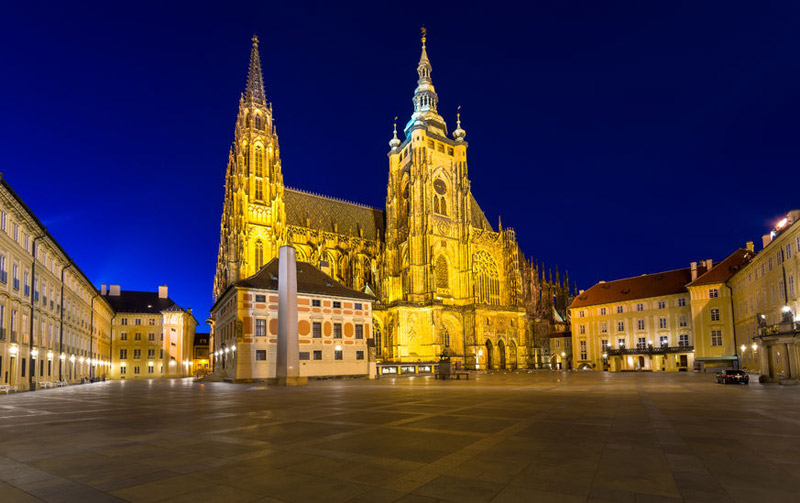
St. Vitus Cathedral, or The Metropolitan Cathedral of Saints Vitus, Wenceslaus and Adalbert, is a magnificent blend of Gothic and Neo-Gothic architecture and stands as the largest temple in Prague. Beyond its size, it holds immense historical, worldly, and religious importance. The cathedral is nestled within the Prague Castle complex and has served as the coronation site for Czech kings and queens. Moreover, it is a significant religious site, being the burial ground for several patron saints and archbishops.
The cathedral’s history is intimately tied with renowned figures in Czech history, most notably King of Bohemia and Holy Roman Emperor Charles IV. Charles IV initiated the construction of the current Gothic Cathedral in 1344, envisioning it as a coronation church, a family crypt, a treasury for the kingdom’s most precious relics, and the final resting place and pilgrimage site for arguably the most celebrated Czech patron saint, Wenceslaus.
St. Vitus Cathedral is an extraordinary testament to Gothic architecture and holds the distinction of being the most substantial and influential church in the Czech Republic. As the Archbishop of Prague’s seat and a monument dedicated to Saint Vitus, the cathedral carries enormous significance and grandeur. A visit to Prague would indeed be incomplete without taking in the majestic beauty of St. Vitus Cathedral.
10. The Petrin Hill and Tower
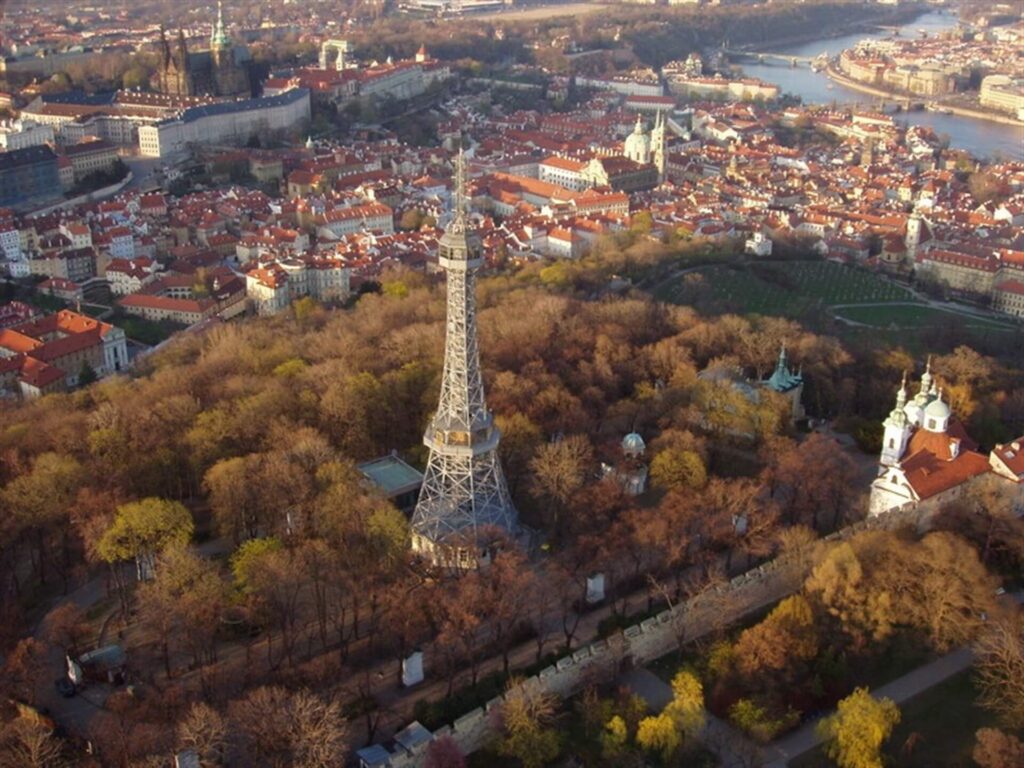
The Petrin Tower, known as Petřínská rozhledna in Czech, is an iconic lookout tower perched on Petrin Hill in Prague. Standing at a height of 63.5 meters, the tower may not seem exceptionally tall, but its location atop the 318-meter-high Petrin Hill grants it a commanding presence over the city.
The tower was constructed for the General Land Centennial Exhibition in 1891, spurred by the initiative of the founders of the Czech Tourist Club, Dr. Vilem Kurz and architect Vratislav Pasovsky. The design drew inspiration from the Eiffel Tower in Paris. Work began on March 16, 1891, based on Pasovsky’s original design and later elaborated upon by engineers Frantisek Prasil and Julius Soucek from the Czech and Moravia Machine Works (Ceskomoravska strojirna). The opening ceremony was held on August 20 of the same year.
The structure’s foundations, laid 11 meters underground, support a 63.5-meter-tall steel frame that weighs 175 tons. The tower’s core is an octagonal tube housing a lift, enveloped by two spiral staircases with 299 steps – one designated for each direction. Saint Andrew’s crosses brace the structure, contributing to its robustness. The tower is equipped with two observation decks, the higher one situated 55 meters above the ground. The ground floor and basement are nested within a neo-Renaissance building.
In July 1938, a fire possibly ignited by a lift cage short circuit caused damage to the tower’s peak. Between 1953 and 1992, the tower functioned as a TV transmission tower. Today, it solely serves as a lookout tower, offering stunning views over Prague and, on clear days, as far as Snezka, the highest peak in the Czech Republic, located 150 kilometers away.
The tower’s surrounds on Petrin Hill comprise beautifully landscaped gardens and several visitor attractions. These include the Rose Garden, Štefánik Observatory (Štefánikova hvězdárna), Mirror Maze, a children’s playground, the Church of St. Lawrence, The Cavern, and the Hunger Wall (Hladová zed). Emperor Charles IV commissioned the construction of the Hunger Wall, a part of the city’s medieval fortifications, during the period 1360-1362. The wall earned its name as it was built during a time of hardship, providing employment for Prague’s residents.
11. Dancing House
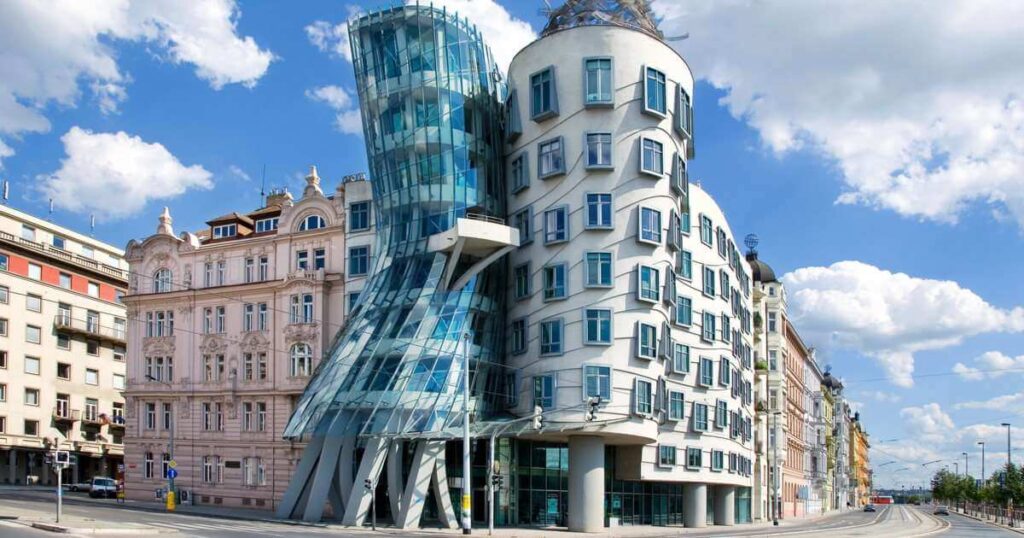
In 1996, the Rašínovo Embankment in Prague welcomed a unique addition to its architectural landscape, the Dancing House. This innovative project is the brainchild of the globally acclaimed architects Vlado Milunić and Frank O. Gehry. The conceptual inspiration behind its design was drawn from the extraordinary dance talents of the iconic film duo – the stone tower epitomises Fred Astaire, while the glass tower represents his dancing partner, Ginger Rogers. The Dancing House features a gallery and a restaurant complete with a terrace that provides a panoramic 360° view of Prague.
Construction of the Dancing House took place between 1992 and 1996. The predecessor of this building was tragically obliterated during the American air raid on Prague on February 14, 1945. In 1992, the Dutch insurance company Nationale Nederlanden acquired the site. They chose an architectural proposal from Vlado Milunic, and subsequently invited the internationally recognised architect and designer Frank O. Gehry for collaboration. This partnership resulted in an exceptional deconstructivist edifice with fluid elements, seamlessly blending with the neighbouring structures. The Dancing House is one of the rare architectural gems in Prague that dynamically interacts with the street space. It’s fondly referred to as the Dancing House or Ginger and Fred, owing to the two towers reminiscent of the legendary dancers Ginger Rogers and Fred Astaire. The stone tower, symbolising the male dancer, contrasts with the glass tower embodying the female dancer. The pinnacle of the stone tower is adorned with what looks like imaginative hair, a touch added by Frank O. Gehry. The interiors boast some design elements from the British architect of Czech origin, Eva Jiřičná. Today, the Dancing House hosts a hotel, a gallery, and a high-end restaurant with a terrace that offers breathtaking views. This architectural marvel was honoured with the prestigious design award by American Time magazine in 1996.
12. Live Performance at the National Theatre
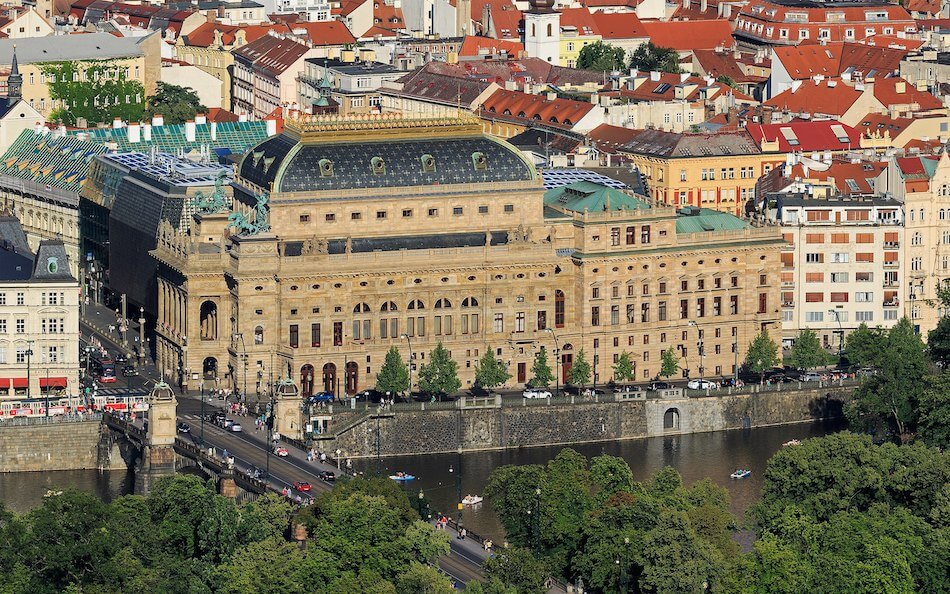
Prague’s National Theatre, nestled idyllically on the banks of the Vltava River, is a must-see for fans of the performing arts. The National Theatre, which hosts the country’s best opera, ballet, and theatre productions, was built in 1881 as a symbol of Czech national identity and to promote Czech language and culture.
Despite a somewhat tumultuous history that saw the building being devastated by fire and even closed by communists, this spectacular theatre has undergone substantial repairs and stands as a testament to the city’s tremendous talent and cultural significance.
Recommended Read: Visit Europe
Average Weather in Prague, Czech
| Month | Average High (°F) | Average Low (°F) | Average Rainfall (inches) |
|---|---|---|---|
| Jan | 36°F | 27°F | 0.6″ |
| Feb | 39°F | 28°F | 0.6″ |
| Mar | 48°F | 34°F | 0.8″ |
| Apr | 57°F | 40°F | 1.0″ |
| May | 66°F | 48°F | 1.8″ |
| Jun | 71°F | 54°F | 2.3″ |
| Jul | 75°F | 57°F | 2.6″ |
| Aug | 75°F | 56°F | 2.2″ |
| Sep | 66°F | 50°F | 1.5″ |
| Oct | 55°F | 42°F | 1.1″ |
| Nov | 44°F | 35°F | 1.0″ |
| Dec | 38°F | 29°F | 0.8″ |





